FAQ #1 – What is Body Type Science (The Four Body Types)?
Body Type Science theory is based on genetics, particularly vertebrae and muscle development (or lack thereof) relative to skinny fat (thin fat and cellulite tissue) and regular fat (white/yellow body fat/adipose tissue). It is a scientific/genetic fact that any part of the human body can be underdeveloped, to whatever degree, including vertebrae and muscle/mass. Just as it is a genetic fact that each vertebra houses a specific set of muscles, and muscle(s) directly affect posture, metabolism, and athleticism, no less. Genetics determine your unique body shape and composition while being influenced by diet, exercise, and lifestyle.
NOTE: The recently identified anaplastic lymphoma kinase gene (AKA the ALK or “skinny” gene) is a genetic variant that offers those who have it resistance to weight gain, no matter what kind of diet a person eats. In other words, the ALK gene helps skinny people stay thin. So, it is true, some people (likely Standard Body Type One/BT1 people) can eat whatever they want and not gain weight, thanks to their genetics.
The Four Body Types (Genetic Scientific Body Type)
Human Vertebrae (26): 7 Cervical, 12 Thoracic, 5 Lumbar, 1 Sacrum, 1 Coccyx
Standard Body Type One (BT1) – 0 Vertebrae Underdeveloped Relative to the 600+ Muscles (Tissue) Development (or Lack Thereof) and Minimal to No Skinny Fat Tissue (All 26 Vertebrae Developed)
Body Type Two (BT2) – 1-8 Vertebrae Underdeveloped Relative to Muscle Tissue Development (or Lack Thereof) and Some Skinny Fat Tissue (Between 25 and 18 Vertebrae Developed)
Body Type Three (BT3) – 9-17 Vertebrae Underdeveloped Relative to Muscle Tissue Development (or Lack Thereof) and More Skinny Fat Tissue (Between 17 and 09 Vertebrae Developed)
Body Type Four (BT4) – 18-26 Vertebrae Underdeveloped Relative to Muscle Tissue Development (or Lack Thereof) and A Lot More Skinny Fat Tissue (Between 08 to 0 Vertebrae Developed)
Comparing The Four Body Types, Genetic Scientific Body Type Quizzes, BT1, BT2, BT3, & BT
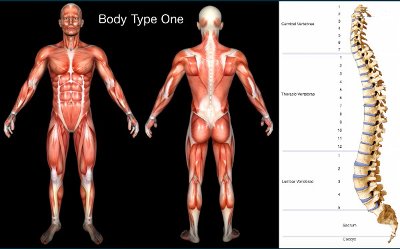
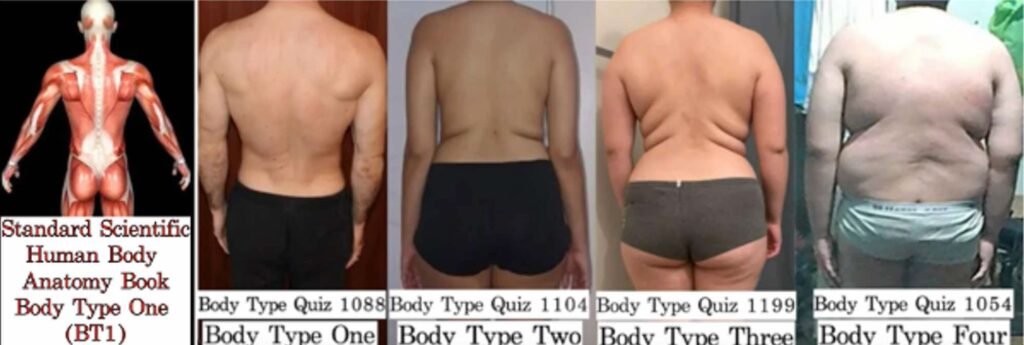
FAQ #2 – What are Current Mainstream Science and Medical Doctor Body Standards?
When you go to have your regular doctor checkup, these are the recognized three medical/scientific body standards by which you are being held to determine whether or not you are healthy & “normal”.
Standard #1: The Standard Body Type One (BT1) found in any scientifically approved resource – unless you have been diagnosed with a specific abnormality, deformation, or underdevelopment by your doctor (and even then, you are still a Standard Body Type One/BT1 only with a specific diagnosis). According to mainstream scientists and medical doctors, once you are within your safe Standard BMI you are a Standard BT1, and the only reason you do not look like a Body Type One (BT1) is because you are consistently eating too many calories above your daily Standard BMR which is causing you to have too much/excess body fat (white/yellow fat/adipose tissue) taking you outside your safe Standard BMI in the overweight (25 to 25.99 BMI) or obese (30+ BMI) columns. Yet, there are countless people in the world who are within safe BMI who are experiencing skinny fat tissue (thin fat, cellulite) and are not a BT1.
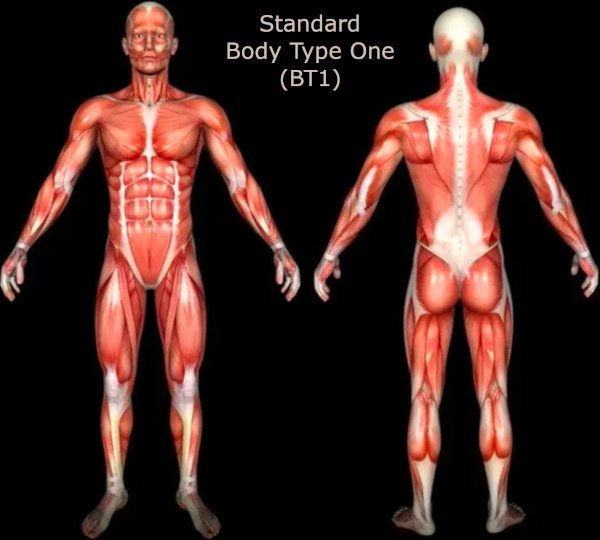
Standard #2: Body Mass Index (BMI), Standard BMI (Height & Weight)
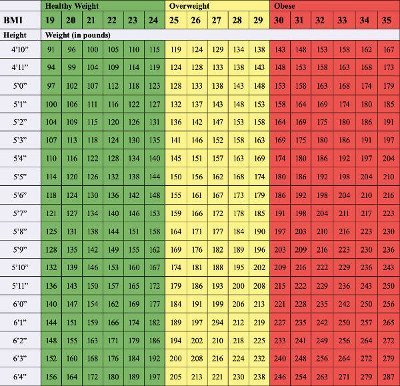
Standard #3: Basal Metabolic Rate (BMR), Standard BMR – the bare minimum number of calories your body requires for basic survival functioning each day.
FAQ #3 – Why are Current Mainstream Science and Medical Doctor Body Standards Inaccurate?
Standard #1: The Standard Scientific Human Body Anatomy Book Body Type One (BT1), genetic scientific Standard Body Type One (BT1) is not accurate because, genetically, it is a fact that any part of the human body can be underdeveloped or undeveloped, to whatever degree. Skinny fat is real and exists in place of where there should be muscles/mass. The Standard BT1 fails to account for skinny fat and excess genetic default muscle mass, no less.
Standard #2: Body Mass Index (BMI), Standard BMI is not accurate because, genetically, skinny fat is real and exists in place of where there should be muscles/mass. The Standard BMI does not account for skinny fat. As well, it is possible to have excess muscle mass (either excess genetic default muscle mass and/or excess added muscle mass via resistance training like weightlifting, calisthenics, or isometrics) on your body which would put you into the overweight or obese column of your BMI weight range, but because you do not have excess regular fat/too much regular fat on your body, you are not overweight or obese.
Standard #3: Basal Metabolic Rate (BMR), Standard BMR is not accurate because, metabolically, the scientifically calculated standard Mifflin St Jeor equation and Harris-Benedict equation for activity do not take into account skinny fat, no less. Science recognizes that one pound of muscle burns 6 calories daily, but one pound of regular fat and/or skinny fat only burns two to three calories per day, which directly affects metabolism, notably Standard BMR. The more skinny fat you have on your body, the more prone you are to putting on regular fat, and the more negatively your metabolism is affected (regular fat and skinny fat burn fewer calories than muscle), the less accurate your BMR calculations are, and thus the fewer calories your body actually needs daily.
Body Type Science is working to strengthen these three Standards to make them more accurate.
FAQ #4 – What is Skinny Fat?
Only recognized by science in the last decade or so, skinny fat is defined as having too much fat on your body even when within safe Standard BMI (18.5 to 24.99) — AKA normal weight obesity (NWO). According to the Standard BMI definition, once you are within safe Standard BMI you no longer have any excess regular fat (white fat/yellow fat) on your body. Being NWO/skinny fat directly contradicts the Standard BMI definition and is technically impossible.
So, how is it possible to be within Safe Standard BMI and still have too much fat on your body?
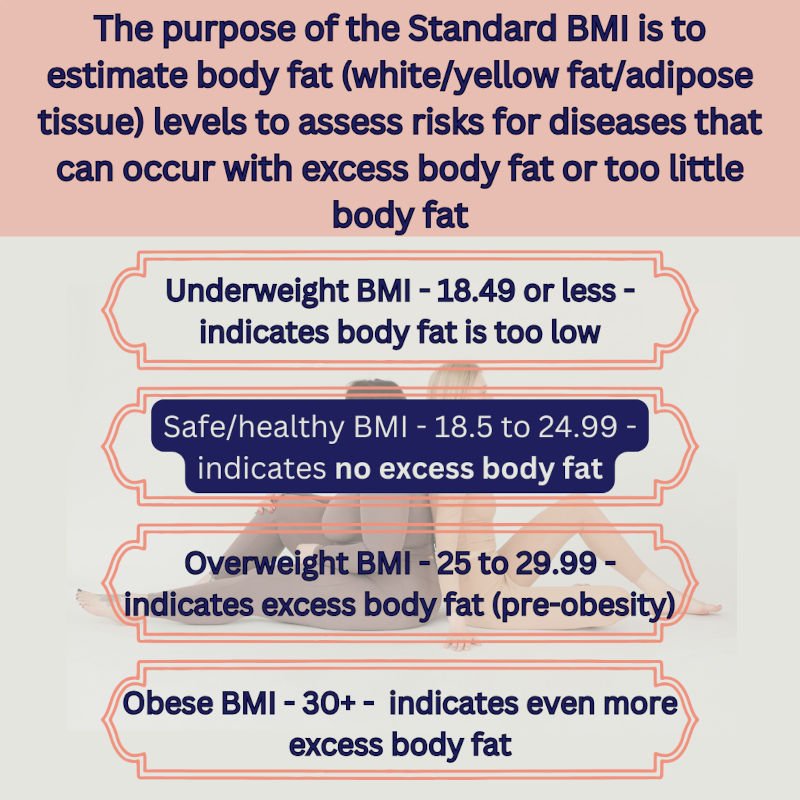
It is possible because the excess body fat you are experiencing is not excess regular body fat (white/yellow fat/adipose tissue), it is unique skinny fat tissue — cellulite and thin fat (main 2 tissue types) — along with loose skin, saggy skin, and crepey skin (which are typically caused and/or influenced by too much/excess regular body fat relative to thin fat and cellulite). Including normal weight obesity, there are 6 types of skinny fat. Here are the main two types, thin fat and cellulite:
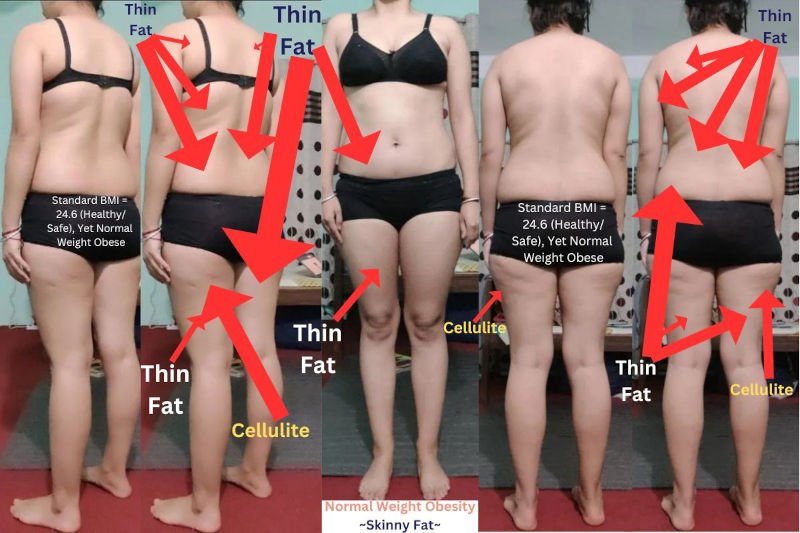 (Below) After more regular fat weight loss, Research Participant 1170 down to 21.3 BMI. Skinny fat tissue remains in all the same places across their body. At age 23, RP 1170 shows consistent lack of widespread genetic default muscle tissue that is obvious – this is normal weight obesity (skinny fat):
(Below) After more regular fat weight loss, Research Participant 1170 down to 21.3 BMI. Skinny fat tissue remains in all the same places across their body. At age 23, RP 1170 shows consistent lack of widespread genetic default muscle tissue that is obvious – this is normal weight obesity (skinny fat):

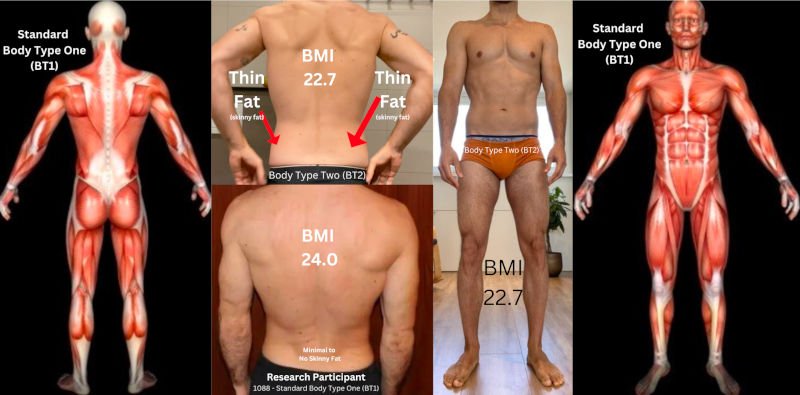
See the thin fat skinny fat tissue on this 22.7 BMI PhD scientist and professional trainer’s love handles and lower back…there is no process in the human body that would cause the muscle tissue on their love handles and lower back to turn into any kind of fat tissue. Why only the love handles and lower back? Genetics.
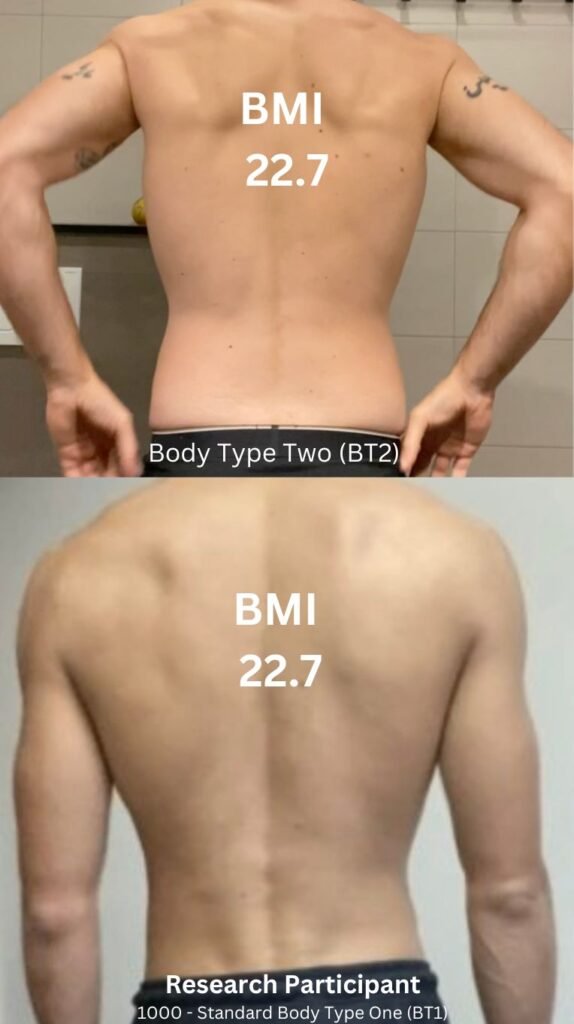
Skinny Fat Tissue – Thin Fat and Cellulite
Regular white/yellow fat is unique tissue. Muscle is unique tissue.
We know cellulite skinny fat is unique fibrous tissue. Globally, 80%+ women and roughly 10% of men have cellulite yet 0% have ever gotten rid of it. At present, there is no FDA-approved way to get rid of cellulite, you can only reduce it. Although skinny fat science is young and evolving and we are not sure what kind of tissue thin fat skinny fat is, we do know thin fat is not muscle tissue or regular white/yellow fat tissue.
You can technically lose 100% of your regular fat tissue yet your skinny fat tissue — thin fat or cellulite — will remain. Regular fat and skinny fat are not the same; they are two different tissues. You cannot turn regular fat into skinny fat or vice versa. Can thin fat turn into cellulite or vice versa, more scientific research is needed.
But there is no doubt that it is not possible to turn muscle tissue into fat tissue, any more than it is to turn fat tissue into muscle tissue. Fat cells and muscle cells are different structures and are not interchangeable. Muscle does not “turn into fat.” There is no process in the human body by which muscle – which is made up of mainly protein, amino acids, and water – transforms itself into any kind of fat (adipose tissue), be it regular fat, brown fat, beige fat, or skinny fat (if, indeed, it is a kind of adipose tissue). The human body, no matter how amazing it can be at times, cannot magically turn one tissue into another.
What Causes Skinny Fat?
The popular spiel online and really everywhere is that poor diet, exercise, and lifestyle cause muscle tissue loss and that lost muscle tissue turns into skinny fat tissue. This is not how human tissue works. No amount of dieting/protein, lifestyle, or exercise (resistance or cardio)/effort in the gym will fix/get rid of/avoid or change/turn/transform skinny fat tissue into muscle tissue.
If it is true (it is not) that lost muscle tissue equates to skinny fat, then it is true for all human beings. Yet, here is genetically blessed Christian Bale (Standard BT1) when he lost a lot of genetic default muscle tissue — but no skinny fat.
If you are experiencing skinny fat where you genetically should have default genetic muscle/mass, you have since birth thanks to your genetics. The younger you are, the harder it can be to discern skinny fat. Currently, the best you can do is reduce it by safely losing regular fat (diet, exercise, lifestyle), adding muscle mass (exercise/weightlifting), and/or paying for a few FDA-approved methods.
FAQ #5 – Why are Science-Based Diet, Exercise, Lifestyle, Metabolism, & Genetics/Body Composition Important?
Because current scientific evidence and facts matter when it comes to human health.
FAQ #6 – How Does the Obesity Epidemic Relate to Body Type Science?
Body Type directly correlates to vertebrae, muscles, regular fat, and skinny fat, including normal weight obesity. Because one pound of muscle burns six calories daily, but one pound of fat/skinny fat only burns two to three calories, people who have skinny fat on their body and are following their calculated Standard BMR/RMR calories are eating too many calories daily. For many people, along with too much empty-calorie and low-quality calorie fast, junk, and processed foods, eating excess calories along with too sedentary a lifestyle leads to being overweight and obese.
Further, having skinny fat where there is genetically undeveloped muscle directly affects posture (spinal extension), which directly and negatively affects the structure and functioning (including exercise, metabolism, and athleticism) of the human body. Skinny fat increases the probability of having excess regular white/yellow body fat. Obesity is defined as having too much/excess regular body fat.
FAQ #7 – Why Are All Other Body Types Unscientific (Somatotypes/Three Body Types/Endomorph/Ectomorph/Mesomorph, Kibbe Body Types, Triangle Body Types, Rectangle Body Type, Hormone Body Types, 25 Body Types, 10 Body Types, Apple Body Type, Pear Body Type, etc.)?
None of those body types have a scientific definition, they are not based on real science. The somatotypes were fully discredited in the 1950s (70 years ago!).
If hormone body types were real, then why are there countless people in the world who have never been diagnosed with any imbalance of hormones by their licensed medical doctor, yet they are not the Standard Body Type One (BT1) once within safe Standard BMI? Why are there Standard Body Type One (BT1) people who have been diagnosed with a hormone imbalance yet have never looked like the four supposed hormone body types, the Adrenal, Thyroid, Liver, or Ovary?
All those body types are completely void of scientific definition and are nothing but unscientific, arbitrary, subjective, nonsense shapes.
FAQ #8 – How Are Scientific Body Types Determined/Identified?
Use the Scientific Health Quizzes including the Scientific Body Type Quiz to determine/identify if you are a Standard Body Type One (BT1), Body Type Two (BT2), Body Type Three (BT3), or Body Type Four (BT4) along with the health of your metabolism, diet, exercise, and lifestyle.


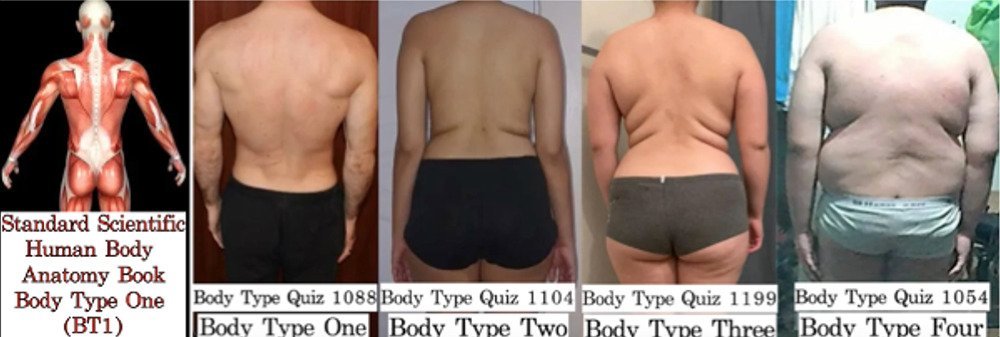
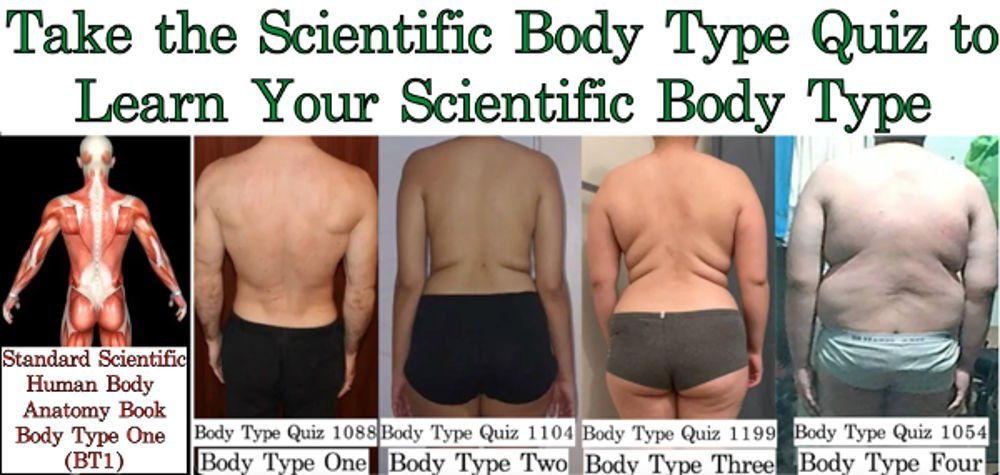

Comment #6158
Interesting study. I have never seen this concept before. I think I'm a body type 2.
Comment #6229
I'm so much familiar with this body types cos I suffered obesity after giving birth, I had to do a lot of exercise but was not consistent so did not loose .
I had to skip lunch and sometimes super and that's how I lost weight
Comment #6231
On one hand, congratulations on losing weight. On the other hand, starving yourself by missing multiple meals is not a long-term successful weight loss strategy or healthy. Intermittent fasting is safe when done correctly -- the idea is to not eat anything for a consistent 12-14 hour (more for some people) period of time, like only eating between 8:00 am to 8:00 pm or 10:00 am to 8:00 pm, or similar (final meal/snack no less than 3 hours before bed). You can consume water (which is recommended to help flush the body). A low-carb diet with a bullseye of 37 carbs is what the current science shows is successful for many people. Steady-state, medium-intensity cardio like walking or hiking for 30-45 minutes, 5-6/7 days per week will help increase your metabolism/metabolic rate -- even fewer days will provide benefits by burning calories. Weight lifting can help increase muscle/mass which will further positively affect your metabolism.
Taking the Scientific Body Type Quiz can help you understand your scientific body type relative to genetics, muscles/mass, skinny fat (cellulite, thin fat, loose skin, saggy skin, crepey skin, normal weight obesity), fat, diet, exercise, metabolism/BMR, BMI, and lifestyle, no less, so you can make better weight management choices to improve your health in the short and long-term.
Comment #6392
So our body Type directly correlates to vertebrae, muscles/muscle mass, fat, and skinny fat, including normal weight obesity. Because one pound of muscle burns 6 calories daily, but one pound of fat/skinny fat only burns two to three calories, people who have skinny fat on their body and are following their calculated Standard BMR/RMR calories are eating too many calories daily. Eating excess calories leads to being overweight using too much oil and food with so many fats.
Now I Knew my body type on taking scientific body type quiz learn me more about our different shape of back bones and with the muscles and how it happened to have this kind of body type and those reason and now I can avoid eating more calories.
Comment #6410
Scientific body type is genetic and is determined by overall body development, specifically relative to vertebrae and muscle/mass in relation to skinny fat (cellulite, thin fat, loose skin, saggy skin, crepey skin, normal weight obesity). Because skinny fat and fat burn fewer calories than muscle, the more skinny fat and/or fat you have on your body, the slower your metabolism. It is 100% possible to get rid of fat/regular fat, it is 0% possible to get rid of skinny fat at this time.
Quality and type of food matter. A calorie is not a calorie, as some calories have more value than other calories. Eating a healthy, balanced diet along with proper exercise and lifestyle relative to your specific genetic scientific body type is the key, and takes time and diligence to figure out.
Comment #6495
It is an incredibly helpful resource that delves into the connection between genetics, DNA, and body types, providing valuable insights into how your unique genetic makeup influences your physical traits and tendencies. By understanding your body type, you can tailor your approach to fitness, nutrition, and overall well-being in a way that maximizes your strengths and addresses any challenges specific to your genetic profile, leading to more effective and personalized results.
Comment #6529
Very interesting, I think I'm a body type 3. but not sure actually, although it's really good science
Comment #6530
What types of skinny fat (cellulite, thin fat, loose skin, saggy skin, crepey skin, normal weight obesity) are you experiencing?